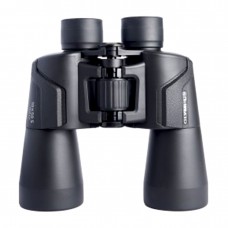Featuring durable high-quality finish and extra wide field of view of 65° the S Series let you discover the expansive nature around you with ease.
Standard Binoculars
10x magnification
Durable, high-quality finish with sure-grip rubber coating
UV protection to protect eyes against the sun's harmful rays
Wide-angle field of view for fast-moving subjects
Aspherical optics guarantee a plasticity and distortion-free view
Single-coated lenses for maximum brightness and contrast
Large, centre-focus knob for fast and easy focusing
Built-in dioptric correction adjusts to individual eyesight
Size W x H x D (mm): 191 x 178 x 6
Weight: 855g
| Product Specification | |
| Specifications |
|







